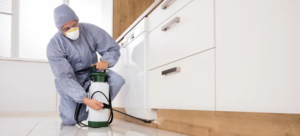Duluth Motorcycle Accident Lawyer can guide you through filing a personal injury claim or lawsuit. They will investigate your case and gather evidence, including medical records, police reports, witness statements, expert testimony, and photographic and video evidence. They will also calculate your damages, such as your medical expenses, loss of income, property damage, and pain and suffering.
By enlisting the help of a motorcycle crash attorney, you can rest assured that all legal aspects of your case will be expertly handled. From filing a claim against the liable party and their insurance company to negotiating for a fair settlement and preparing for trial if necessary, your attorney will be there every step of the way. This allows you to focus on what truly matters-your recovery and spending time with your loved ones.

It’s important to remember that the at-fault driver is unlikely to admit fault, and their insurance company may attempt to minimize your compensation. However, with a seasoned motorcycle accident lawyer by your side, you can be confident that these challenging negotiations will be expertly handled. Your lawyer will ensure that you receive the full compensation you deserve, allowing you to focus on your recovery.
Multiple parties can be held liable for a motorcycle accident, including other drivers, pedestrians, or bicyclists who disobeyed laws, manufacturers of vehicles and/or parts that contributed to the accident, and government entities responsible for road maintenance and design. The plaintiff must establish causation and damages to prevail in a motorcycle accident case. Causation requires a direct link between the defendant’s negligence and your injuries and losses. The most common causes of motorcycle accidents in New York include distracted drivers, reckless driving, and failure to follow traffic signals.
Negotiating with the Insurance Company
Car accident victims often have to negotiate with the insurance company in order to resolve their claim. This can be a long and frustrating process, but it’s essential to understand what the insurance company is trying to do and how you can counter those tactics.
Insurance companies are in the business of making money, and they try to reduce their payouts as much as possible. They will typically start with an unreasonably low settlement offer, and it’s important to reject this initial offer. You should also make sure to have your attorney communicate with the insurance company throughout the negotiation process. This will send a clear message that you’re taking the claims process seriously.
Your attorney will help you calculate the value of your injuries and property damage. This information will be compiled into a demand letter that you’ll send to the insurance company. This demand letter should describe the accident, your injuries, and how the crash has impacted your life. It should also include the amount of compensation you are seeking. This number should be higher than your estimated claim value to allow for room for negotiating.
The insurance company will then respond to your demand letter with an offer. If the insurance company’s offer is lower than you expected, your lawyer can work with them to negotiate a better deal.
When negotiating for damages, your attorney will be able to provide evidence of the following types of damages:
Medical Expenses: Bills for emergency treatment, surgeries, doctor visits, medications, and future medical care. Lost Wages: Compensation for wages and benefits you would have received if not for your injuries. Property Damage: Costs to repair or replace your damaged vehicle and any other items. Pain and Suffering: Non-economic damages that compensate you for the physical and emotional trauma of your injury.
It’s important to remember that the insurance company is not required to pay for non-economic damages unless the law specifies they must do so. However, if you stress how your injury has negatively impacted your quality of life and how the insurance company can’t just take that away, this could have an impact on their final settlement offer.
Filing a Claim
When you’ve suffered damages, whether your vehicle is totaled or you have medical bills to pay or other expenses, filing a claim for those costs is your first step. A car accident lawyer can help you get started by collecting documents from you and the police, taking pictures, and contacting witnesses. Then they can help you file your claim, which will likely be with your insurance company. Then, they can guide you through the process of deciding what type of compensation you’re entitled to, which includes both economic and non-economic damages.
In many states, including New York, drivers are required to carry auto insurance policies that cover their financial responsibility for injuries and property damage they cause. If a driver is found to be at fault for an accident, their insurance company must reimburse the victims for their losses. However, even when the at-fault driver is insured and their insurance company must cover your damages, it can still be difficult to obtain full compensation.
A skilled New York car accident attorney can help you navigate the complexities of insurance law. They can read through the complex jargon in your policy and explain what it means for your case. They can also decipher the evidence that an adjuster will use to decide what your losses should be.
Frequently, there are multiple factors that caused or contributed to a car accident. If you are partially at fault for the crash, a jury can apportion your damage award according to your share of liability.
A NYC car accident lawyer can help you pursue compensation for everything that you’ve lost due to the crash. Economic damages include items like current and future medical expenses, your loss of income or earning capacity, and your property damage. Non-economic damages, on the other hand, are more subjective and can’t be easily quantified. They include things such as pain and suffering, humiliation, diminished quality of life, and the impact on your family. An experienced NYC car accident attorney can assess your claims and work diligently to secure every penny you deserve.
Taking Your Case to Trial
Car accident attorneys know how to deal with the intricacies that are unique to car accidents. They delve into the laws and procedures regarding auto insurance, state traffic law, and how to establish fault and liability for injuries. They are also skilled negotiators who will not allow their clients to be taken advantage of by uncaring or undervaluing insurance companies.
An experienced lawyer will also understand how to determine what damages are fair compensation for a client’s loss. This will include both past and current losses as well as projected future losses, such as ongoing medical care and lost earnings due to a disabling injury. In many cases, a settlement is sufficient to cover the full extent of a victim’s losses.
If a case does not resolve through settlement, an attorney will be prepared to file a lawsuit on their client’s behalf. An experienced lawyer will be familiar with the intricacies of New York State’s laws on negligence, comparative negligence, and the statute of limitations for filing a lawsuit. They will prepare the necessary documents and submit them to the proper court.
Regardless of how a case resolves, a lawyer will be by their client’s side throughout the process, providing legal advice and support at every step. They will handle all communication with insurance companies and ensure that their clients do not say anything that can compromise their claims, such as admitting fault or accepting a low settlement offer.
The right lawyer can make a huge difference in the outcome of your case. A qualified lawyer can help you get the maximum compensation for your losses so you can heal and recover. Contact a trusted Manhattan car accident attorney to discuss the details of your situation and how they can help.
An experienced attorney will have a track record of successful outcomes and a reputation for tenacious advocacy. They will also have a network of professional connections, including judges and other attorneys, that can be helpful in fighting for your case. They can also use their connections to secure expert testimony when needed.
Negotiating with the Insurance Company
Car accident victims often have to negotiate with the insurance company in order to resolve their claim. This can be a long and frustrating process, but it’s essential to understand what the insurance company is trying to do and how you can counter those tactics.
Insurance companies are in the business of making money, and they try to reduce their payouts as much as possible. They will typically start with an unreasonably low settlement offer, and it’s important to reject this initial offer. You should also make sure to have your attorney communicate with the insurance company throughout the negotiation process. This will send a clear message that you’re taking the claims process seriously.
Your attorney will help you calculate the value of your injuries and property damage. This information will be compiled into a demand letter that you’ll send to the insurance company. This demand letter should describe the accident, your injuries, and how the crash has impacted your life. It should also include the amount of compensation you are seeking. This number should be higher than your estimated claim value to allow for room for negotiating.
The insurance company will then respond to your demand letter with an offer. If the insurance company’s offer is lower than you expected, your lawyer can work with them to negotiate a better deal.
When negotiating for damages, your attorney will be able to provide evidence of the following types of damages:
Medical Expenses: Bills for emergency treatment, surgeries, doctor visits, medications, and future medical care. Lost Wages: Compensation for wages and benefits you would have received if not for your injuries. Property Damage: Costs to repair or replace your damaged vehicle and any other items. Pain and Suffering: Non-economic damages that compensate you for the physical and emotional trauma of your injury.
It’s important to remember that the insurance company is not required to pay for non-economic damages unless the law specifies they must do so. However, if you stress how your injury has negatively impacted your quality of life and how the insurance company can’t just take that away, this could have an impact on their final settlement offer.








